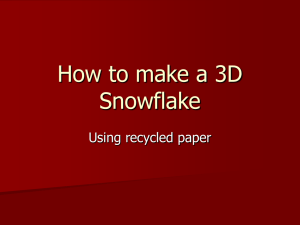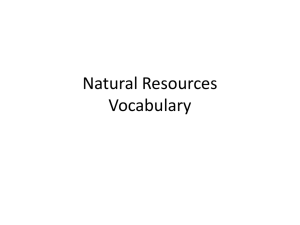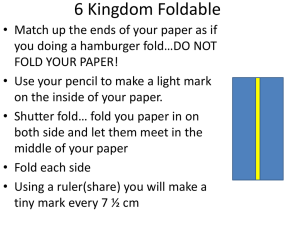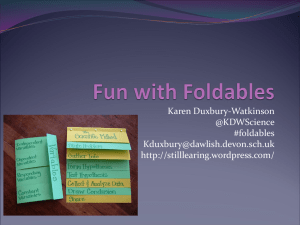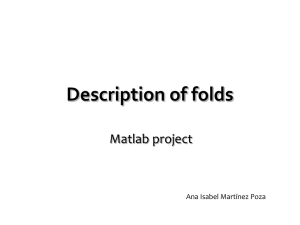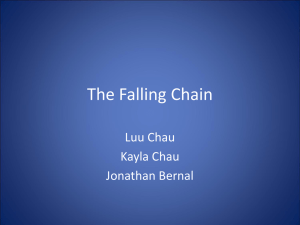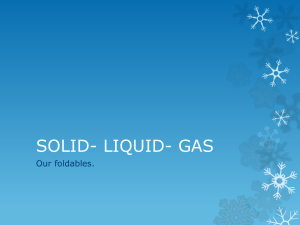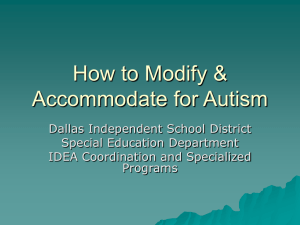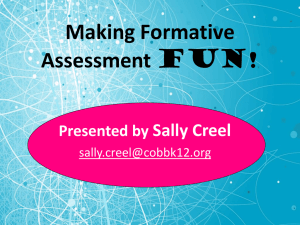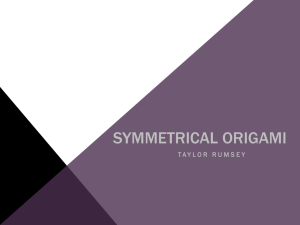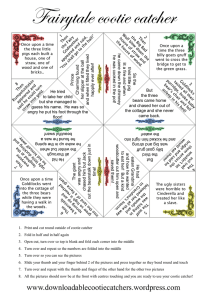File
advertisement
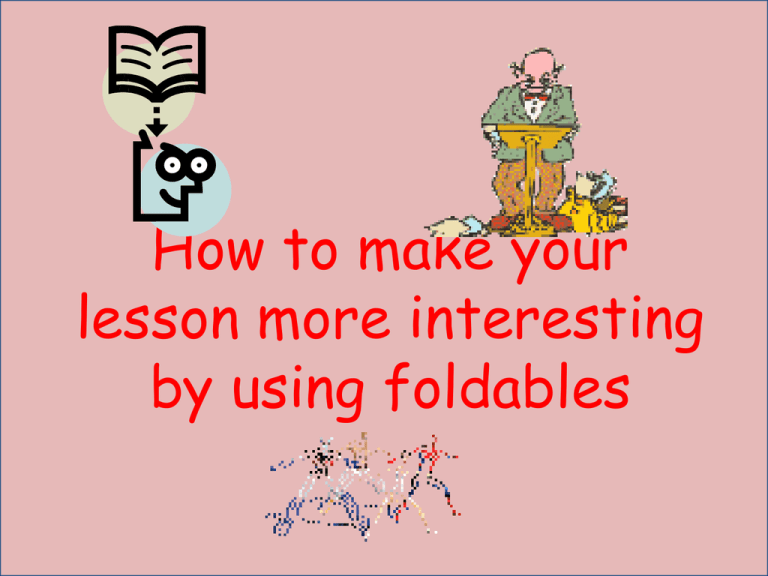
How to make your lesson more interesting by using foldables What Are Foldables • 3 dimensional interactive graphic organizers created by students • can be used as a self-check study guide • can be used in all grade levels and all subjects • learning tool • assessment tool What Makes This Strategy Good for ALL Students • • • • • • • • • lowers the affective filter fun can be used as a study aid/guide serves as a good vocabulary builder/word bank offers tactile component which is recommended for strugglers can use pictures in place of print can be used as group work can be used as a presentation can be displayed Why use foldables • • • • • • fun and motivating hands-on approach used as a study guide organizes information reaches all learners students retain information better • can be used as an alternative assessment • takes the place of worksheets • can be used for differentiated instruction When to use foldables • • • • introducing new vocabulary introducing a new skill, topic, or idea review any time, any subject, any language Basic Folds Three Tab Foldable 1. Fold an 8 ½ by 11 piece of paper in half the long way. 2. Hold the long way and fold it in thirds by making two folds. 3. Cut down the two folds to the fold in the center of the paper. 4. Fold the three flaps down. 5. Fold the two side flaps on to the center panel. Example of when to use it: -Venn Diagram -Sequencing (First, Middle, End) - KWL chart -States of matter -Picture –word -etc Pyramid Fold Directions: 1. Fold the 8 ½ by 11 sheet into a taco. Cut off the excess rectangular tab formed by the fold. 2. Open the folded taco and refold it like a taco the opposite way to create an X-fold. 3. Cut one of the valleys to the center of the X, or the midpoint, and stop. This forms two triangular flaps. 4. Glue one of the flaps under the other, forming a pyramid. Example of when to use it: - Character, setting, plot - Fraction, decimal, % - Country, State, Capital - Letter/sound, word with beginning sound and word with ending sound - Life cycle (3 stages) -etc Envelope Fold 1. Fold a sheet of paper into a taco forming a triangle. Cut off the leftover piece. 2. Open the folded taco and refold it the opposite way forming another taco and an X-fold pattern. 3. Open the taco fold and fold the corners toward the center point of the X forming a small square. 4. Trace this square onto another sheet of paper. Cut and glue it to the inside of the envelope. Pictures can be placed under or on top of the tabs. Example of when to use it: - Seasons - Hidden picture - Sequencing (First, Then, Then, End) - 4 square writing - Fact Families - Life cycle (4 stages) -etc Shutter Fold 1. Begin as if you were going to make a hamburger but instead of creasing the paper, pinch it to show the midpoint. 2. Fold the outer edges of the paper to meet at the pinch, or mid-point, forming a shutter fold. Example of when to use it: - Anything with groups of 2 - Fact and opinion - Cause and effect - Compare and contrast - Living-Non living - Description (illustration on the outside, description on the inside) -etc Double Shutter Fold 1. Make a shutter fold 2. Fold the shutter fold in half like a hamburger. Crease well. 3. Open the project and cut along the two inside valley folds. 4. These cuts will form four doors on the inside of the project Example of when to use it: - Anything with groups of 4 - Phases - Cycle - 4 Ws (Who, What, When, Where) - Shapes (properties) - Seasons - Comparisons - Fact families (+ and -, or x and ÷) -etc Bound Book 1. Take two sheets of paper and fold them separately like a hamburger. 2. Mark both folds one inch from the outer edges. 3. On one of the folded sheets, cut both sides from the edge to the one inch mark. 4. On the second folded sheet, start at one of the one inch mark and cut the fold between the two marks. 5. Take the cut sheet from step 3 and fold it like a burrito. Place the burrito through the other sheet and then open the burrito. 6. Fold the bound pages in half to form an eight-page book. 7. If more pages are needed, repeat step 3, and insert all pages at once like in step 5. Example of when to use it: - Writing a story - Sequencing - etc Vocabulary Foldable 1. Fold a sheet of notebook paper in half like a hot dog. 2. On one side, cut every third line. This usually results in ten tabs (cut every 4th or 5th line if less tabs are needed) 3. Label the tabs. Example of when to use it: - Vocabulary word on the front, definition or illustration inside - Math fact family on the front, illustration/computation inside - etc Layered Book 1. Stack two sheets of paper so that the back sheet is one inch higher than the front sheet. 2. Fold up the bottom edges of the paper to form four tabs. Align the edges so that all of the layers or tabs are the same distance apart. 3. When all tabs are the same size, crease the paper to hold the tabs in place and staple the sheets together along the mountain top.. 4. If 6 tabs are needed, use 3 sheets (or 4 sheets for 8 tabs, etc) Example of when to use it: - Vocabulary word is visible, definition and/or illustration under the tab - Money: amount is written on the top, the tabs represent different ways to show that amount, and illustration with picture of coins/bills under the tabs - Constructive response / word problem steps / RICE - Different ways of representing a number -Facts families - etc Pocket Foldable 1. Fold a sheet of paper in half like a hamburger. 2. Open the folded paper and fold one of the long sides up two inches to form a pocket. Refold along the hamburger fold so that the newly formed pockets are on the inside. 3. Glue the outer edges of the two-inch fold with a small amount of glue. 4. Optional: Glue a cover around the pocket book. - Example of when to use it: Anything you need 2 groups of “Belong” Vs “Don’t Belong” “Yes” or “No” Short A – Long A etc Three Quarter Foldable 1.Make a two-tab book and raise the left-hand tab. 2. Cut the tab off at the top fold line. 3. A larger book of information can be made by gluing several three-quarter books side by side. Note: Use a tag board paper, it will stand better if you want to display it Example of when to use it: - Sketch or glue a graphic to the left, write one or more questions on the right, and record answers and information under the right tab - etc Folded Table or Chart 1. Fold a sheet of paper into the number of vertical columns needed to make the table or chart. 2. Fold the horizontal rows needed to make the table or chart. 3. Label the rows and columns. REMEMBER: Tables are organized along vertical and horizontal axes, while charts are organized along one axis, either horizontal or vertical. Note: Fold the sheet of paper into as many columns or rows that you need for the particular topic. Websites on Foldables • Folded Books (Kite, Clover, Heart) http://www.shininghours.com/creating/bookideas.htm • Not Your Same Old Book Report http://www.teachnet.com/lesson/langarts/foldedbkrpts071599.html • Literature and General Info http://getinthefold.blogspot.com/ • Do Foldables Work in the Classroom? http://forums.atozteacherstuff.com/showthread.php?t=71231 • Social Studies Foldables http://hcpstraining.org/instruction/ss/resources_files/ss_foldables_read_first.htm • Economics, Reading, and Study Skills – High School https://www.box.com/shared/7agbycm808 • Science – Biology http://www.biologyjunction.com/biology_projects.htm
